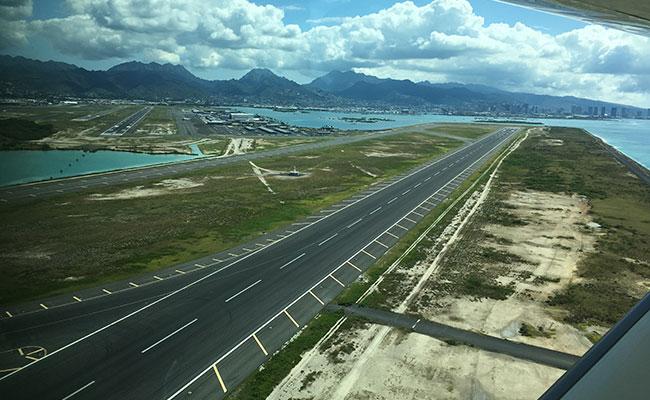Sustainable Design: Advanced Planning Is Essential to Resilience in Hawaiʻi
Emphasizing smarter lifecycle designs to ensure our clients’ projects will thrive and endure

Increased climate variability and surging population growth are placing greater demands on limited resources such as water, energy, and physical space. Our teams are considering how buildings and infrastructure can be designed to more effectively cope with these stresses and perform well into the future. Facilities need to be built not only to operate in greater harmony with nature but also to withstand the forces it may unleash.
Tetra Tech understands the value of resiliency planning and sustainable design in addressing emerging risks associated with a changing world. We develop unique solutions to some of the toughest problems—using both cutting-edge technologies and commonsense approaches.
As conceptual frameworks, resilience and sustainability increasingly guide decisions in the planning, design, and engineering of our projects. Resiliency emphasizes robustness and the ability to recover, while sustainability considers measures of environmental impact and resource conservation. Both concepts share common end goals in contributing to society’s capacity to thrive in a meaningful way. In this Sustainable Design article series, we highlight Tetra Tech projects that represent some of the industry’s very best examples of resiliency planning and sustainable design.
Resiliency planning
Increasing threats associated with storm surges, sea level rise, and higher intensity weather underscore the importance of resiliency strategies for addressing climate-related risks. Tetra Tech is working with clients on adaptation measures to reduce risks to vulnerable communities.
Advanced planning is essential to resilience in Hawaiʻi
Communities in the Hawaiian Islands are very familiar with both dramatic weather events, such as hurricanes, and more gradual changes in their landscape, including coastal erosion. Hawai‘i is working proactively to make its communities more resilient through extensive planning and preparation. Tetra Tech worked with the Hawai‘i Department of Land and Natural Resources to prepare the Hawai‘i Sea Level Rise Vulnerability and Adaptation Report, which assesses and quantifies Hawaii’s vulnerability to sea level rise from passive flooding, annual high wave flooding, and shoreline erosion. Our team also provided recommendations for reducing exposure and increasing adaptability.
“Coastal communities need to incorporate exposure to chronic coastal flooding with sea level rise into land use and development plans,” said Dr. Catherine (Kitty) Courtney, a Hawai‘i-based marine environmental scientist with Tetra Tech who led the report development. “In addition, communities need a pre-disaster strategy that involves a carefully thought-out reconstruction plan. How can we be best ready to take advantage of a disaster to build back better, should an event occur? Communities need scenarios that would allow them to reconstruct in a way that reduces risk from sea level rise.”
Tetra Tech used model outputs provided by the University of Hawai‘i School of Ocean, Earth Sciences, and Technology, Coastal Geology Group to develop sea level rise exposure areas, analyze chronic flooding risks, and provide recommendations and actions to increase Hawaii’s capacity to adapt. Some of the key recommendations include practicing sustainable and resilient land use and community development, incentivizing improved flood risk management, and prioritizing smart redevelopment outside of sea level rise exposure areas.
“It’s critical that at-risk communities integrate sea level rise into long-range planning,” Kitty said. “Land-use plans should identify the best opportunities for resilient construction and factor in sea level rise exposure so that rebuilding efforts are not focused in areas that are predicted to be chronically flooded in 30 years.”
A commitment to our future
A city is the sum of its parts—buildings, communities, coastlines—and efforts to enhance long-term resilience and sustainability must reach across all of them. Tetra Tech’s community resiliency specialists and global sustainable infrastructure teams are demonstrating what can be achieved through collaboration, creativity, and an unwavering dedication to the highest principles in planning, design, and engineering. By leading in projects that advance resiliency and sustainability, we can continue to deliver the most effective solutions to our clients and help ensure a vibrant and enduring future.

